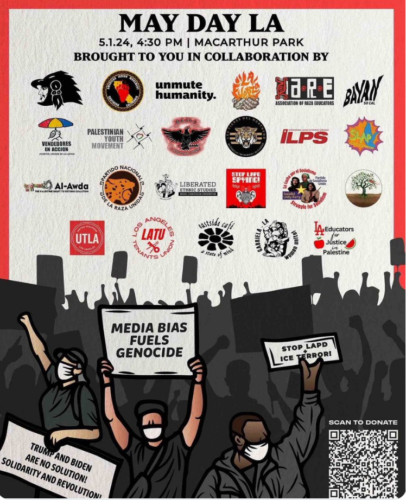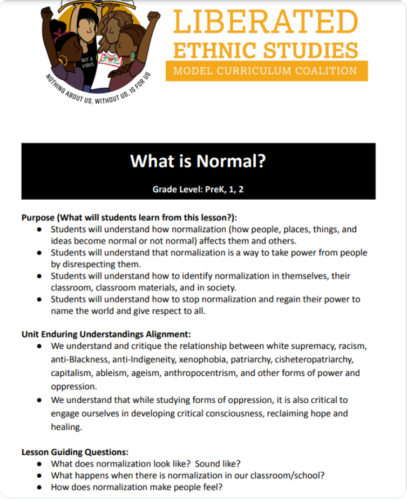There is only one excuse for Trump to accept the challenge to two debates as he did: to force Biden into a public forum requiring him to put his dubious conversational skills in the spotlight for an extended period of time. Only time will tell if White House handlers can get the tana leaves mixed right for Biden to appear at least halfway cogent. The downside is that the critical flaw in the debate format will remain yet unaddressed: allowing members of the press to act as moderators. That means that only those questions that matter to the press will get asked, while much of what matters to flyover country gets ignored. I would like to see a format in which questions are fielded by a panel of two or four moderators representing think tanks instead of press organizations. Imagine if a question like “What do you plan to do for small business?” had popped up during one of the 2020 Democrat primary debates. You think any of those candidates would know where to even begin to find an answer? Especially during THAT year when COVID policy herded small business to the sacrificial altar in the name of the precautionary principle? The press should be in the business of reporting the news rather than crafting policy, and taking away its role in shaping the debates is a step in the right direction.
Miscellaneous
Subsidization, Regulation, and AI
A bipartisan working group led by Charles Schumer has introduced what this article calls a “long-awaited AI roadmap.” The document calls for at least $32 billion to be allocated for nondefense AI innovation.
Bill Gurley, a venture capitalist of long standing, says: In the entire history of the VC industry has there ever been a category LESS in need of incremental $$$$$.
Indeed. Corporations and individuals with money to invest are falling all over themselves to invest in things AI-related. Meanwhile, there are all kinds of serious issues–the hardening of the electrical grid against both enemy-caused EMP and natural magnetic storms, for example–that are not being adequately funded by the private sector and could benefit from some of that $32 billion. But they’re not as trendy at the moment.
Today’s WSJ includes an op-ed by Martin Casado and Katherine Boyle, both of Andreessen-Horowitz. They write about the Department of Homeland Security’s formation of an AI Safety and Security Board, whose purpose is to advise the department, the private sector and the public on “safe and secure development and deployment of AI in our nation’s critical infrastructure,” and they note that:
Of the 22 members on the board, none represent startups, or what we call “little tech.” Only two are private companies, and the smallest organization on the board hovers around $1 billion in value. The AI companies selected for the board either are among the world’s largest companies or have received significant funding from those companies, and all are public advocates for stronger regulations on AI models.
Much of the discussion of AI risks reminds me of the parable of Baptists and Bootleggers. And when regulation becomes a dominant competitive factor in an industry, it becomes very difficult for new players to survive and thrive unless they are exceptionally well politically-connected.
Your thoughts?
RFK Jr
A significant number of people seem to be showing interest in RFK Jr’s candidacy….which I guess is somewhat understandable given the widespread frustration with the two major parties. His highly-recognizable name surely doesn’t hurt, either. But I see major problems with some of his policy positions..and the attitudes underlying those policies.
First, he doesn’t seem to be much of a supporter of free speech–listen to this video clip, in which he expresses a wish that climate change skeptics could be jailed. And note the shot at “the Koch brothers”, which sounds like something one would expect to hear from a politician of the extreme Left. (Also this, which seems to be the first part of the above video) ‘Reckless endangerment’–for what? For operating chemical plants?
Second, he seems to be anti-vaccine…not in the sense of raising specific concerns about a specific vaccine, but much more broadly–read this articleand watch this video clip. See also this NIH paper on vaccine safety.
Here’s an estimate of the number of lives saved by various vaccines over the last 50 years.

I don’t agree with the guy who linked the above chart at Twitter when he said “There is no vaccine problem. There has never been a vaccine problem. There will never be a vaccine problem.” We can’t possibly know what problems will occur with future vaccines, and there have indeed been some problems with past vaccines. But he is certainly correct that vaccines overall have been a major lifesaver.
Neo has done some research into RFK Jr’s past statements about vaccines.
I find it interesting the RFK Jr thinks people should be put in jail for doubting what he thinks is the scientific consensus on climate, while he himself makes quite bold statements against the scientific consensus on vaccines.
Third, here is what RFK Jr had to say about nuclear energy.
So, it sounds like basically he would take nuclear off the table over any relevant time frame…while simultaneously demanding extreme action against fossil fuels in the name of climate.
Fourth, here’s an absolutely bizarre RFK Jr statement concerning Covid and Ashkenazi Jews.
Fifth, here’s what he said about the people who live in ‘red’ states. Reminiscent of Hillary Clinton’s “basket of deplorables” and Obama’s comment about people who are “bitter” and who “cling to guns or religion or antipathy to people who aren’t like them.”
Overall, RFK Jr seems more interested in attacking and casting blame than he does in solving problems–in this, he resembles Joe Biden.
Your thoughts?
Teach the Children Well
Here’s the union that represents ‘educators’ responsible for teaching 600,000 Los Angeles kids, celebrating May Day in collaboration with Students for Justice in Palestine and other Left-oriented groups.

Here’s a ‘Model Curriculum’ for second grade and below:

And here are Girl Scouts in St Louis, teaching kids to chant ‘Free Palestine’ like zombies. Video.
Will it be any surprise if the kids who are subject to this kind of indoctrination turn out to behave like these ‘protestors’?

And/or this UPenn crowd reacting to raw footage of the Oct 7 massacre with cries of “liar liar colonizer”? Video
Worthwhile Reading, Viewing, and Listening
But here’s May Day in LA, as celebrated by the Los Angeles Teachers Union, along with other organizations
Cost of the student debt ‘cancellation’ is estimated at .9 trillion to 1.4 trillion.
In addition to paying for those student loans, get ready for much higher electric bills if Biden’s executive order is sustained.
Colorized 1890s videos of daily life in countries around the world
‘Woke’ hierarchy and an upper-class underclass
A former ‘woke’ woman. And another one.
How much will the campus chaos hurt the Democrats?
Biden compared with Disraeli
Laxman Narasimhan, CEO of Starbucks:
The thing we didn’t do enough of is really attack the occasional customer with delivering and communicating value to them in a more aggressive manner,” said Starbucks CEO Laxman Narasimhan. (speaking on the chain’s declining market share in the U.S.)
Pythia Capital says:
This sentence does not mean anything. One reason to read lots of transcripts is you find 95% of CEOs talk like this. They use jargon because they have not thought deeply about anything; they don’t know how to create value. People who cannot explain a complex subject simply usually do not understand that subject. When you stumble upon a management team that DOES know how to create value it is magical.
I think 95% is too high an estimate, but blather like the above is depressingly common, and not only reflects a lack of thought but contributes to lack of coherent thought. Even more than in business, the phenomenon especially common among politicians and among the followers of political ideologies.
Related: see The Costs of Formalism and Credentialism.